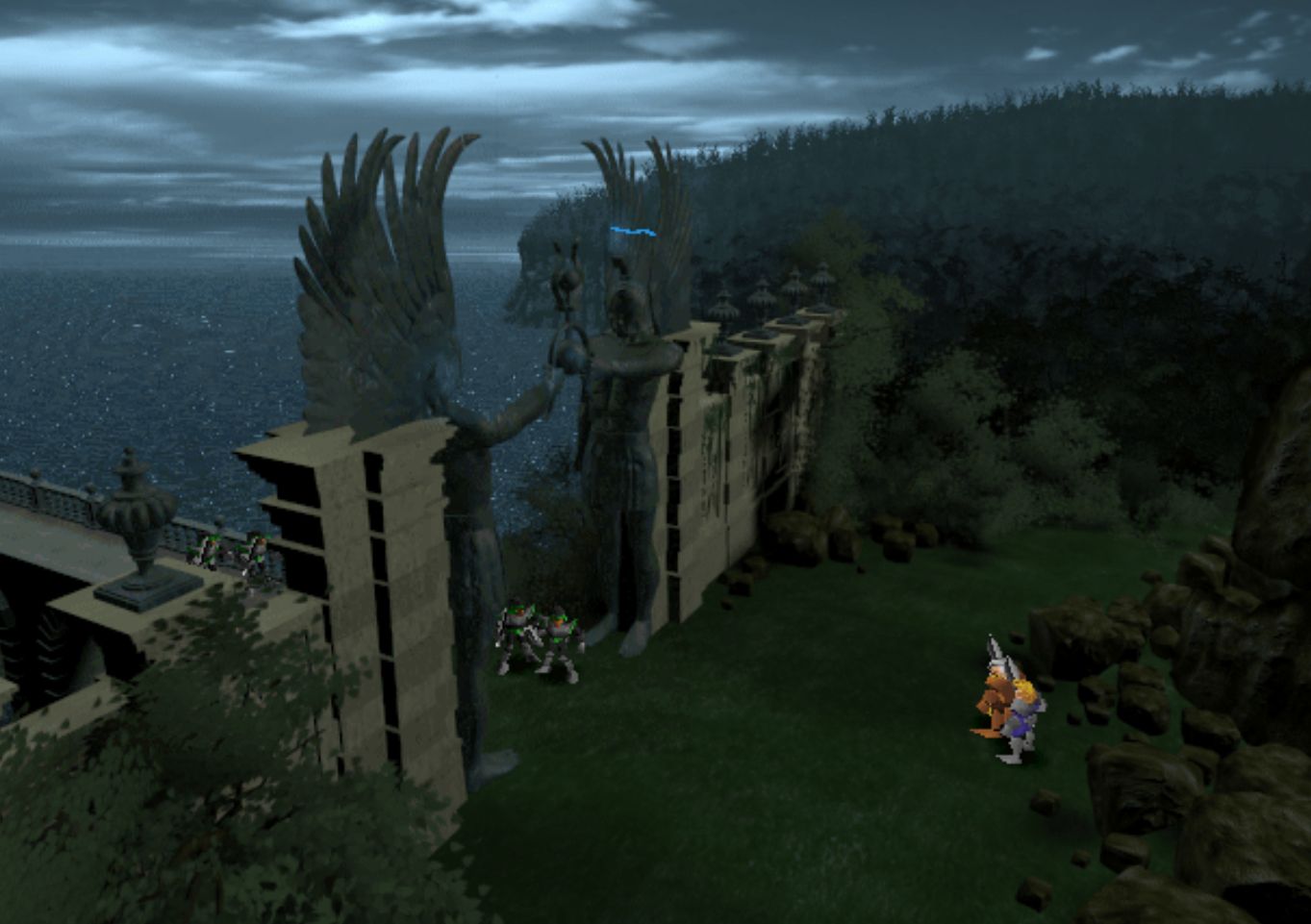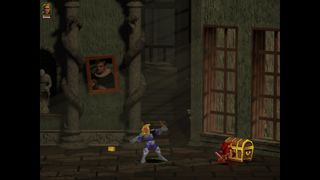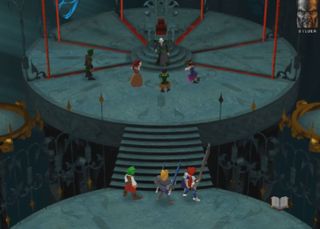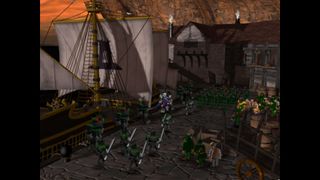Silver, the 1999 RPG with gesture-based combat
Great controls and characters make this old RPG shine.

Reinstall invites you to join us in revisiting PC gaming days gone by. Today, Ben takes on the kings and castles of Silver.
Ah, Infogrames. The name that makes your brain go “Infogrames? What the hell is a grame?” The logo that looks like diced potatoes. Through the late ’90s I came to associate the name not with carbs but quality. Outcast, Worms: Armageddon, V-Rally, Mission: Impossible. The best, for me, was Silver.
A fantasy action-RPG, Silver was given away with PCs manufactured by Tiny as part of a promotion, which is like pouring yourself a bowl of Coco Pops and having a disc tumble out. It deserved better.
Given the heady excitement of becoming the new owner of an HP Pavilion 4450, an 8MB rig boasting 4GB of storage along with free copies of Encarta 98 and Where in Time is Carmen Sandiego?, why do I remember Silver? Easy: the gesture-based controls.
Clicking and holding the mouse button then moving it vertically causes David, the blond suit of armour from the box cover, to perform an uppercut. Thrusting it downwards makes him turn quickly to attack enemies at the rear. Holding the mouse button then moving your hand horizontally performs a side slash.
It’s glorious. I had never interacted with an RPG like that before, and I haven’t since. David’s sword is an extension of my arm, and although it feels a bit binary today – like rudimentary motion control – it remains an intuitive method of replicating swordplay. Enemy positions matter. If you’re surrounded, use sideswipes. If they’re jumping at your from behind, meet them with a turnaround slash. Are they cowering with shields? Lunge.

It’s glorious. I had never interacted with an RPG like that before, and I haven’t since.
No sooner is the tutorial over than Fuge, son of the evil emperor Silver, abducts your wife, Jennifer. Silver is ordering all women of childbearing age to his castle so he can choose a bride. Hey guy, ever heard of speed dating? Your quest involves joining the rebels, forming a team, and rescuing the female population. The story is less special than its controls, noteworthy only for the unironically clichéd way it latches onto every fantasy trope imaginable. There’s a young man seeking vengeance against a shadowy force, eight elemental orbs to collect as you romp through medieval hamlets and icy fortresses, and the emotional deaths of loved ones.
Numbers rise out of damaged enemies, and those you kill drop health-replenishing turkey legs. With Final Fantasy VIII, Suikoden II, Baldur’s Gate II and Diablo II as contemporaries, Silver was somewhat lost in the shuffle. In my opinion, it was better than all of them.
The biggest gaming news, reviews and hardware deals
Keep up to date with the most important stories and the best deals, as picked by the PC Gamer team.
Take your companions: there’s Chiaro, a wizard apprentice who joins the rebels after learning his master was killed by Silver, and the unarmed Cagen, a martial arts monk who survived the madness that spread through his monastery by not drinking the poisoned water. The once-proud warrior Jug is looking to redeem himself after languishing too long in seedy pubs. All of them have their own motivation for fighting.

Although you can’t control your companions directly, choosing the right one is the key to battle. For instance, if you want to hang back and cast ice magic, pick Jug, who fights up close. Not that this works all the time, however. In one instance a wintry dragon boss turns your friends to ice and forces you to fight alone. Companions add an extra wrinkle to already engaging combat, another variable to shape your approach to the enemy encounters
Silver’s portrayal of female characters was at least reasonably credible for the late ‘90s. Sekune, an archer you meet in the rebel camp, can certainly handle herself. If you talk to her while she’s practising and question how good she is at hitting moving targets, she responds by bullseyeing a bird out of the sky. Vivienne escaped Silver’s women-herding thanks to her combat skills. One of the most powerful characters in the game is Silver’s sorcerer daughter, Glass. Though the game opens with the mother of all misogynistic acts, Silver’s female characters have the capacity to be as nuanced as the male characters, which is a surprise given the context of the story.
The strong writing endures. One scenario is set at the magical gates of Haven, which permit only the virtuous to enter. “What if my hatred for Silver betrays me?” questions David. “He’s stolen your wife,” replies grandad. “Your hatred is justified.” These touches are things I’ve only recently appreciated.

My abiding memory of Silver, however, is the controls. Over the course of this 15-hour RPG you battle werewolves, dragons, imps and summoners, but the scheme excels during sword-on-sword encounters. Particularly memorable is the boss battle with the dual-wielding Fuge, requiring you to master on-the-fly duking and moving in energetic bouts.
Admittedly, the magic has slightly dimmed today. The lack of lock-on makes targeting more difficult than it should be, and special moves you can learn from weapon trainers, like a figure-of-eight slash, miss a trick by not making you perform that motion on your mouse. Still, in my mind, Silver’s fast death dances are comparable to circle-strafing in Unreal or Quake, and why it never caught on in later action-RPGs is anyone’s guess.
So, will we ever see a sequel? Possibly. Nordic Games snapped up the rights to the dormant Atari franchise. Then again, whether they’ll just create a new franchise rather than roll with a name that’s unGoogleable remains to be seen. But for those who do remember it—its great characters and innovative controls—Silver shines bright.
Most Popular





